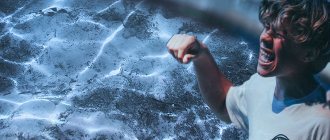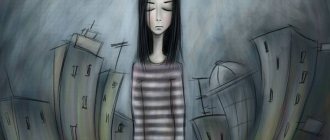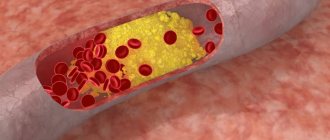Slava Profina 07/25/2018 no comments
2
The most common mental disorder is the fear of rats and mice. These phobias are called zemmiphobia and musophobia (suriphobia). It is generally accepted that women suffer from them more often, but this is not true. Scientists have proven that fear of rodents is characteristic of both sexes equally.
Danger of disease
Being afraid of something or someone is a normal property of the psyche. But, if this feeling takes on a pathological character, then it can lead to various problems.
Important! The development of the disease can be gradual and unnoticed.
Worry and worry make it difficult to lead a normal life. In severe cases, problems develop with the nervous and cardiovascular systems. Constant neuroses will lead to an early heart attack.
In severe cases, the phobia may be accompanied by obsessive-compulsive disorder. With it, a person becomes fixated on performing rituals that should protect him from harm.
General information about the disease
The name "peniaphobia" consists of two words from ancient Greek. "Penia" means "poverty", "phobos", respectively, "fear". This disease rarely comes alone. It is usually accompanied by fear of tomorrow (eosophobia), fear of aging (gerascophobia) and other deviations.
The impetus for the appearance of peniaphobia can be a stressful situation that happened to a person or someone from his close circle. Such cases include:
- among older people - fear of losing a source of income or means of subsistence against the backdrop of one’s own inability to change the situation due to lack of strength due to age;
- among housewives, companions of wealthy men and their children - fear of losing their contents;
- their husbands and fathers, in turn, are afraid of losing what they have - their fortune, good position and reputation;
- among businessmen - fear of impoverishment after one unsuccessful deal;
- among people suffering from a serious illness and their relatives there is a fear of poverty, which can be equated to death due to the inability to purchase expensive medicines.
A few years later, Rossini purchased the property, but the terms of the purchase were unfavorable for him. And the composer became convinced that he was repeating the fate of his father, that poverty would overtake him, and he would have to make a living by begging for alms. During the same period, he developed an obsessive fear of losing his mental abilities. Rossini was able to cope with some of his fears, but until the end of his life he continued to suffer from peniaphobia and paraskavedekatriaphobia (fear of the day of bad luck, Friday the 13th).
As a rule, people who have never known it are susceptible to fear of poverty. Those whose childhood was spent in poverty consider poverty as one of the probable life situations. They allow the sad experience to be repeated, but have no doubt that they will be able to cope with a difficult situation, even if it requires a lot of work. In other words, they are confident that their strength is enough to maintain their usual standard of living, and therefore do not experience a panicky fear of poverty, although they are not eager to experience this experience again.
Practicing psychiatrists at Moscow psychology centers report that over the past 5 years, complaints about fear of impoverishment have become three times more frequent. It is noteworthy that among the patients with such a deviation, representatives of the middle class began to appear. Experts attribute this to the unstable economic situation, which can lead to the loss of very small property.
Types of phobias
Fear of dolls - what is this phobia and what is it called?
Each pathological fear may have its own characteristics. Not everyone knows about the fear of mice, what this phobia is called. Psychologists call this disorder musophobia. With it, a person experiences fear only of mice, both wild and ornamental.
Sometimes the fear of rats is called suriphobia. In this case, a person is afraid only of large rodents; the rest do not cause him concern. Any phobia can manifest itself in varying degrees. Some people find it unpleasant to see live animals, while others find it unpleasant even to see pictures or stills from films.
You may come across the name zemmiphobia. The disorder is characterized not only by fear of mice, but also of any rodents: voles, moles and others.
The fear of bats is called chiroptophobia. This condition is characterized by aversion to only one type of animal. A person can perceive the rest normally.
Phobias are often combined with each other. Therefore, you should not neglect their development, as they can lead to serious health problems.
What is the fear of mice called?
Musophobia (from the Latin mus - “mouse”) is the most common term meaning an irrational, obsessive fear of mice. There is another synonym – suriphobia. Women's fear of mice is a cliche that is used in the plots of many films and jokes. In fact, men can also experience negative emotions when they see a mouse, but they are by nature less emotional and are not inclined to express emotions openly. As for serious phobic disorder, both sexes are equally susceptible to it.
Symptoms of manifestation
Fear of dogs - what is the name of the phobia?
The fear of rats and mice does not immediately turn into a phobia. The first signs appear upon direct contact with rodents. At the sight of them, a person becomes stiff, numb and experiences a panic attack.
Even if the mouse is sitting and has no intention of coming, it still causes fear
If a person encounters a rodent in the house, then he begins to constantly look for traces of the animal, set traps and be afraid to be in a dark room.
Important! In some cases, a person begins to feel that there is a persistent smell of a mouse in the room.
Any rustle will provoke anxiety. Even having a cat at home will not calm the patient. The peculiarity of the fear of rodents is that a person cannot rationally explain his fear.
In psychology, there are two groups of symptoms: behavioral and physiological. The first is characterized by a feeling of anxiety, an obsessive desire to look for a rodent, etc.
The second is characterized by manifestations from the body:
- Cardiopalmus;
- Increased sweating;
- Nausea;
- Vomit;
- Dizziness;
- Headache and others.
As your fear of rodents progresses, your symptoms will intensify. In severe cases, it can lead to complete inability to lead a normal life.
Musophobia can be called a modern disease, since due to the abundance of landfills, rats and mice live quietly in the city. You can encounter them every day.
Specialist help
In the event that independent measures do not work, it is recommended to urgently visit a doctor. During the treatment process, he will use specially developed techniques designed to cure the fear of mice and rats:
- Hypnotherapy sets up subconscious programs and tries to destroy the virus that has infected them in the form of a poorly controlled phobia. If she managed to turn it off, then all the disturbing symptoms would instantly disappear. But many patients are afraid to entrust their consciousness to a stranger and therefore avoid hypnosis.
- Neurolinguistic programming presents a phobia as a distorted view of real life, which is in the hands of the person himself. If the patient manages to look at his fears from a different angle, then it is quite possible that they will stop bothering him.
Source
Reasons for appearance
Fear of clowns - what is this phobia and what is it called?
It is normal to experience unpleasant feelings when you see rodents. They are carriers of various diseases. Therefore, subconsciously a person tries to avoid meeting them.
Important! A phobia often develops after a traumatic situation.
If a child is attacked by a rat or mouse, he will begin to fear history repeating itself. Sometimes children hear a squeak in the dark and they turn on the light. In this case, they may see rodents in the room or on the crib. This picture can be very scary.
The phobia is not always observed from childhood. It can also appear in an adult. For example, a woman wants to take some grains from a bag of cereal and stumbles upon the carcass of a dead mouse or sees an animal in the kitchen.
Sometimes rats attack people, this can happen in a summer cottage. A person may not notice the animal and step on it. After such a collision, pathological fear appears.
In urban environments, there is also a chance of encountering rodents. They live near garbage dumps, in landfills and calmly walk from house to house. Few people enjoy such a neighborhood.
Impressionable individuals who are prone to hypochondria may take information about infectious diseases too seriously. Rodents carry many types of them: from rabies to parasites. Therefore, any thought about meeting them causes panic.
Both women and men are susceptible to phobias
Pathological fear of mice can develop against the background of other problems. With a high level of anxiety, every little thing is perceived sharply and negatively.
Signs and manifestations of musophobia
There are several degrees of musophobia, and they have different symptoms. Some people feel a sense of discomfort when they see a rodent, while others freeze in extreme horror, as if paralyzed.
The main physical signs include:
- dryness and discomfort in the mouth
- feeling of anxiety and impending disaster
- desire to run as far as possible
- painful sensation in the epigastric region and severe shortness of breath
- excessive sweating
- trembling and involuntary movement of limbs
- inability to react rationally to events
In its advanced form, the disease can cause a breakdown in social ties. Musophobes realize that they behave absurdly at the sight of a rodent, because a mouse will not attack a person, but at the same time they cannot control themselves and their fear. Fear of mice leads to shame in public places, in front of friends, which later develops into prolonged depression.
If left untreated, the neurosis will not go away on its own , and will begin to progress, and the horror of mammals will begin to acquire ever larger, violent fantasies.
A severe form of the disease carries with it a lot of consequences - a person ceases to see the line between reality and fantasy, there is a feeling that there are mice everywhere. Often in these people's houses all the cracks are clogged, the openings are blocked so that rodents do not get out and enter the house.
How to deal with the problem
Treatment of fear consists of two components: medication and psychotherapy. Pills, tranquilizers and antidepressants are prescribed only in severe cases when physical symptoms need to be relieved.
With the help of medications you can reduce the level of anxiety, worry, and worry. A person will not even notice how he will cease to be afraid of every rustle and vague shadow on the floor. In this state it will be easier for him to undergo psychotherapy.
The specialist helps the patient analyze his life, find the reason for the development of the phobia and get rid of it. With this you can radically change your attitude towards the situation.
Important! Psychotherapy can take several months; it is not a quick fix.
In some cases, a specialist can gradually accustom a person to the subject of fear. Show videos or pictures of mice. Gradually, the contact time increases, and the patient begins to calmly perceive rodents.
Self help
Sometimes a person with musophobia has to use meditation or auto-training. These two methods help reduce the level of panic, calm down, and collect your thoughts.
Techniques like these are needed for quick help.
To relieve stress, you can watch cartoons with mice or funny videos. The main thing is to understand that rodents are not dangerous and can be quite cute and funny. Many owners of such animals make videos with tricks and post them on the Internet.
Musophobia is called one of the most common problems. Due to the large number of rodents in cities, people are increasingly encountering them. All this leads to all sorts of problems.
Medical practice
It is impossible to do without the use of medications in severe cases, because the constant stress that the patient is under can cause significant harm not only to the psyche, but also to general physical health. Mild symptoms can be relieved with the help of mild herbal sedatives. They need to be taken in a course lasting up to 3 months. If spasmodic contractions of the gastrointestinal tract, diarrhea, and vomiting are present, then together with them an antispasmodic is prescribed for half a month.
Treatment of musophobia by a specialist
In more complex situations, when patients are afraid that a mouse is waiting for them around every corner, tranquilizers are used. The period of their use should be strictly limited, because tranquilizers are addictive. If the phobia has caused persistent depression, antidepressants are prescribed.
Adaptation to a stressor occurs gradually. To begin with, fear and its origins are discussed with a psychologist. Afterwards the person is asked to look at pictures of an animal that frightens him. In classes, the psychologist does not try to completely eradicate fear, but to limit it to reasonable limits, because it is better to avoid wild rats, for example.
Adaptation to cute mice
An effective treatment method is computer imaging. Pictures and games help the patient quickly cope with his problem and respond adequately to rodents.
Another effective method is linguistic programming. It acts quite quickly and helps the patient rethink his attitude towards animals. Psychologists believe that fear of mice is nothing more than a perverted understanding of reality created by man himself.
What does a person with a phobia experience?
Having talked about what phobias are, we should also note what an individual has to go through when faced with the subject of his subconscious nightmares. It depends on the fear experienced, or more precisely, on whether the individual can encounter the phobia in everyday life (for example, dendrophobia, when a person is afraid of trees and even stumps), or whether it is not so common (for example, papaphobia, fear of the Pope).
More precisely, the individual either remains in constant tension or lives an ordinary life until the object of the phobia appears in front of him. Then the disease experiences a variety of emotions. The reaction depends on the human will and the depth of fear. Someone becomes numb, unable to move or make a sound. Others instantly panic and indulge in loud hysterics. In both cases, the heartbeat quickens, a jump in blood pressure occurs, it is possible that the vision becomes dark, and the legs become weak. Some break into a cold sweat, others experience nausea, even vomiting, while others immediately lose consciousness.
People experience such intense fear that they are even afraid to call it by name
Sometimes people experience such a strong fear of something that just the name of the phobia makes a person shake (there is a fear of buttons, their mention makes the individual shudder)
Naturally, this state of affairs harms the individual, forcing him to live in tension and avoid many things, which is why it is so important to cure or at least reduce as much as possible the influence of a phobia on a person
Description of the violation
Not all people know what the fear of insects is called. The general term for this phobia is insectophobia. There are several more species identified. For example, if a person is only afraid of bees, then this should be called apiphobia; fear of ants is called myrmecophobia.
Disgust and the desire to avoid insects are inherent in every person. This was necessary for the survival of the species, since some individuals were poisonous or could carry various diseases, such as malaria or parasites.
Another name for insectophobia is entomophobia. Pathological fear can occur at any age. In severe cases, a person stops leading his usual way of life, he looks everywhere for the object of his fear.
For example, the fear of flies is called dipterophobia. With it, a person will be terrified of encountering black flying insects. They can be found in stores or in garbage dumps.
Treatment of nyctophobia
All human fears, including nyctophobia, can be treated. There are two known ways to correct this condition:
Drug therapy involves taking sedatives, antidepressants and tranquilizers. They are aimed at reducing the vegetative manifestations of the body when experiencing fear.
It is important to understand that pills do not treat the cause, since it lies in the psyche. They only eliminate the consequences and therefore are not the main and main type of treatment.
Self-medication can be harmful, so self-prescribing and taking medications is highly undesirable. It is necessary to consult a doctor and get competent advice. Meetings with a psychologist are the main element in the treatment of phobias. Currently, there are a large number of psychological schools that have different approaches and tools for working with clients. For example, art therapy affects the psyche through creativity and is great for children. The Gestalt approach works with the human body and feelings. Cognitive psychology aims to change ineffective thinking, which leads a person to psychological problems.
These are just a few schools, there are others, among which each individual can choose the one that is closer to him.
If the manifestations of a phobia are serious, leading to self-destruction and harm to oneself and others, then it is worth combining these two methods for a more effective impact. The time spent on correction depends on the duration of the disease, its severity and the personal characteristics of the sufferer. Sometimes one month is enough for a person to cope with the disease, for others it will take years.
“I imagined that there was a purulent, smelly wound on my body”
pixabay.com/ru
Trypophobia is the fear of “cluster holes,” that is, a cluster of holes in one place.
A 43-year-old friend of mine recently discovered that he has trypophobia. Here's what he said:
“I never paid attention to this before. When I won one competition, I was awarded on stage and given a large beautiful bouquet. We, all the winners, took a photo together. When I received the bouquet, I didn’t have time to look at it properly. Only as I was descending from the stage did I glance briefly at the flowers, and my gaze lingered on one flower. At the same time, I experienced a strange sensation, I don’t even know how to describe it. Maybe this feeling arises when you have to treat a terrible, deep wound on your own body. However, for example, when I accidentally cut my finger, such a feeling does not arise. I have seen wounds on the bodies of animals, and no matter how sorry I was, I never felt such disgust.
I suddenly imagined that this flower was part of my body. It’s as if there is a purulent, fetid, disgusting wound on my body. It seemed as if this flower was something disgusting, it was like a disease itself. Consists of many holes from which seeds protrude. Of course, when I saw the flower, I did not lose consciousness, but I experienced an inexplicable, strange and heavy feeling. This probably coincided with my emotional state. I simply pushed this flower inside the bouquet so that it became invisible and didn’t look anymore.
But this fact haunted me; I wanted to figure out what it was all about. A lot has been written about this on the Internet. They write that some people with trypophobia experience fear when they look at honeycombs or small holes in the dough - they appear when the yeast dough rises.
From Airat's personal archive
After this incident, I saw a tree in which a woodpecker had hollowed out numerous small holes with its beak. I also felt uneasy, but the feeling that I experienced when I saw that flower did not arise.
Later I realized what it was - the phenomenon is also explained by genetic memory. When a person sees a large cluster of holes, distorted information goes to the brain that these holes are on his body. Holes are left, for example, by insects or worms, eating a tree or fruit, that is, the accumulation of holes is associated with an unhealthy, painful state, and this thought is stored in the human mind. This is how the mechanism of trypophobia is explained.
Often people with trypophobia are not taken seriously and are laughed at. Some people susceptible to this phobia, it turns out, cannot even look at the tattoos on the body of others. It seems to them that the drawings on the body are the same small holes.
I showed this flower to my daughter, and she said that it was hard for her to look at it too. The phobia is probably inherited. Be that as it may, I think this is a rare occurrence.
And that flower is called a lotus, and it turns out that it is sold in many flower shops.”
"Clowns are not cute at all"
26-year-old Lisa has a very difficult life with her coulrophobia .
“As a child, my parents took me to a children’s play. When the scary, as it seemed to me then, clowns appeared on stage, my scream was probably heard on the street even by people passing by the theater building.
I can't look at them. Clown masks and costumes in stores terrify me. The profession I have chosen is also related to the stage, and I often have to transform into various characters. But under no circumstances could I dress in a clown costume.
Sigmund Freud also touched on this topic in his writings. He wrote that clowns are able to influence people’s thoughts, confuse consciousness, and even hypnotize, therefore, according to Freud, clowns seem to many to be dangerous images.
pixabay.com/en
I also have pediophobia . This fear prevents me from getting close to porcelain dolls, statues, mannequins and robots. And I've never been to a wax museum. Horror films with dolls and sculptures also have a bad effect on me,” Lisa admitted.










